For the past few months I’ve been freelancing with the Sense team, creating technical content to help users get more from their monitor. And now, I’ve had the opportunity to give the system a real-world test drive in my own home. They recently sent over an electrician to install a Sense unit in my home’s electrical panel. The plan was for me to track my installation, and day-to-day life with Sense as it discovered what was going on in our house. I expected the experience to be informative. I didn’t expect how much fun it would be.
Day 1
The electrician just left. My Sense monitor is installed and I’m staring at the app. There’s a lot happening already. Even though it hasn’t discovered any devices it shows my home is using about 300 watts right now. How’s that possible? Nothing is on! Or is it? Walking around I see that the bathroom fan is on and there’s a lamp on.
Maybe it’s all the devices in stand-by mode, like my Mac and printer, DVR and TV. I guess even the oven clock and coffeemaker are drawing some power. I open the fridge door and there’s an instant jump on the app’s Power Meter. The two bulbs in the fridge are using about 95 watts. I’m impressed, there was zero lag between electrical activity and Sense detecting it.
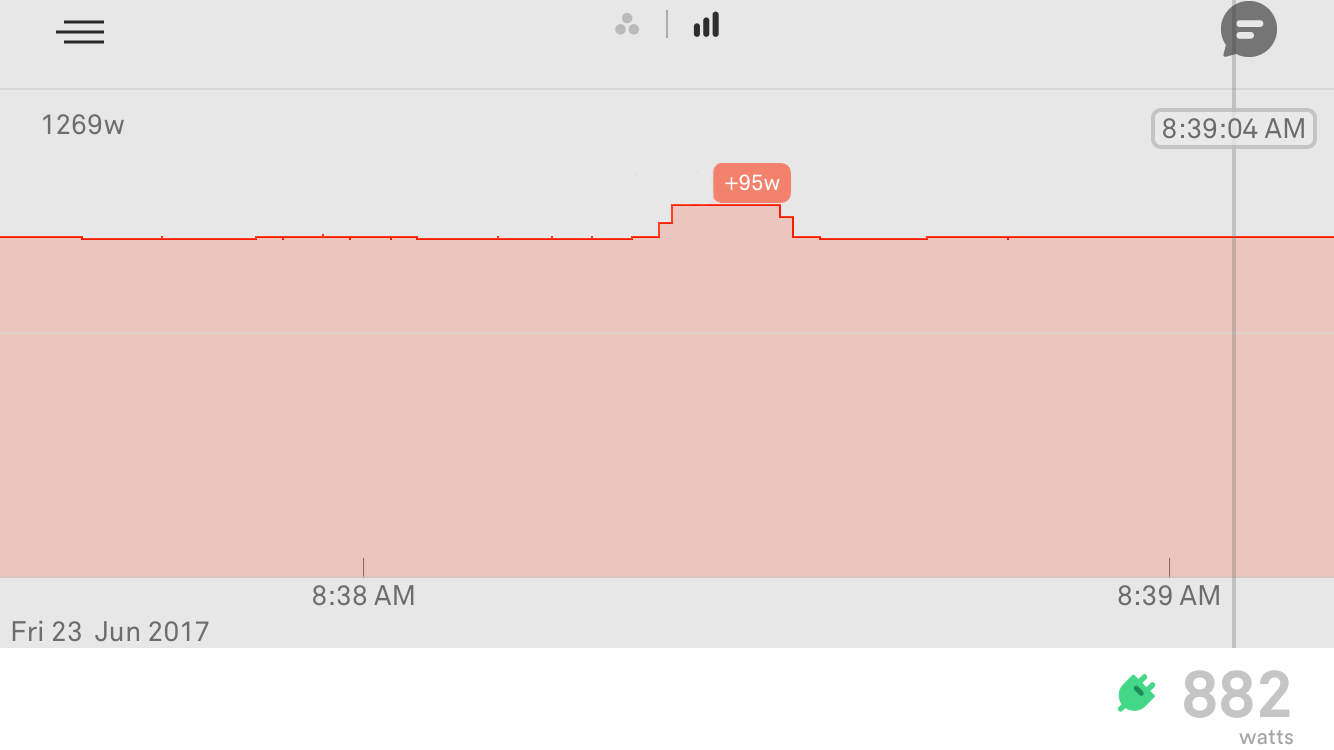
While I can’t see where it’s going yet, I can see how much electricity we’re using. And I can see that the usage has been increasing all day as my wife and kids come home and we start dinner. Someone is watching TV, phones are getting charged, and just about every light in the house has been left on.
As the day winds down, I check the app to see that our peak usage comes between 9-10 p.m.
Day 2
Now we’re getting somewhere. I get an alert mid-morning saying that we’ve made some discoveries.
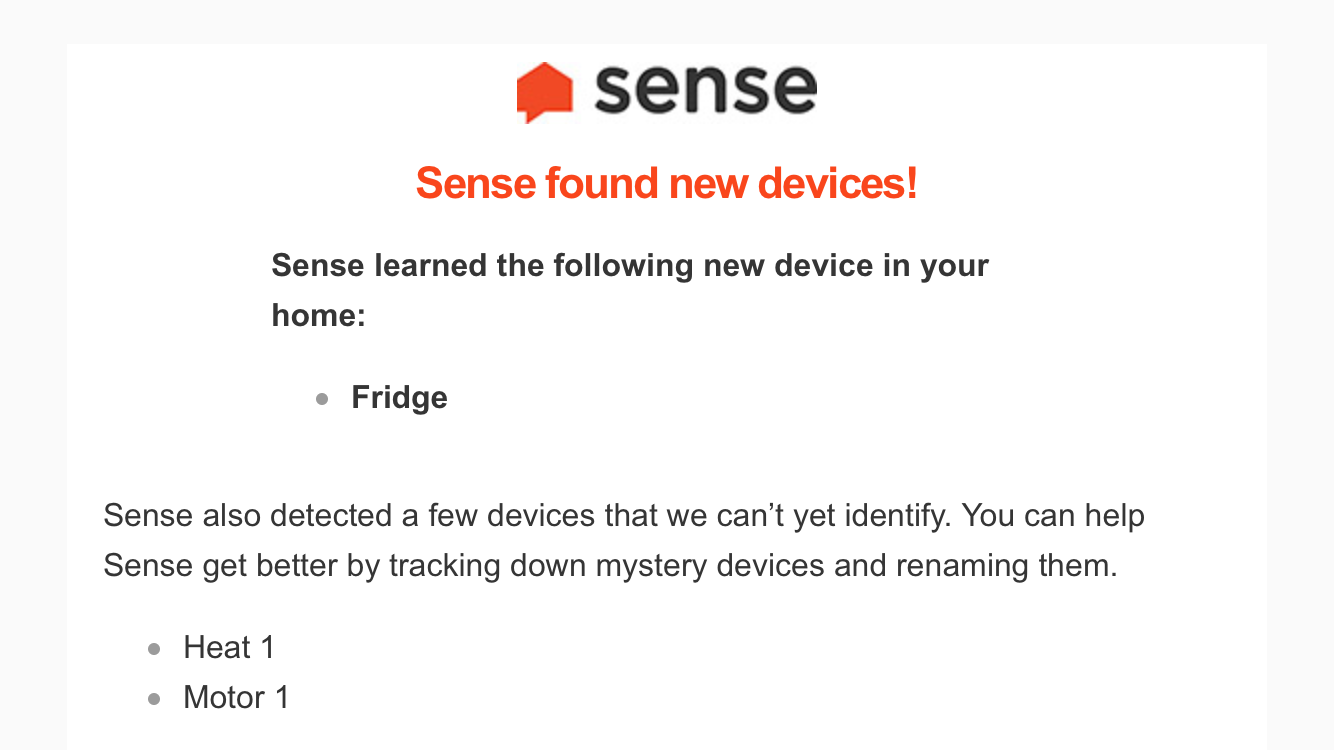
Again, peak usage happens between 9-10 p.m., at .7 kWh for the hour. Total usage for the day is 14 kWh.
Day 3
I’d like to rename Motor 1, so I’m using the Devices screen on the Sense Home app. I can see that it was on from midnight until 11 a.m., but I can’t think what it could be. It will require a little more detective work. We determine that Heat 1 is the coffeemaker by looking at historical data, coming on regularly a little before 6 a.m. Just to double check this, I opened the app and then started the coffeemaker. Device confirmed!
Day 4
I’m curious about the fridge’s consumption, so I go to the Devices screen, tap on the fridge and see its daily usage highlighted in red. It has been very consistent over the past few days, but as the hot, humid Boston summer gets into full swing, it will be interesting to see if that changes.
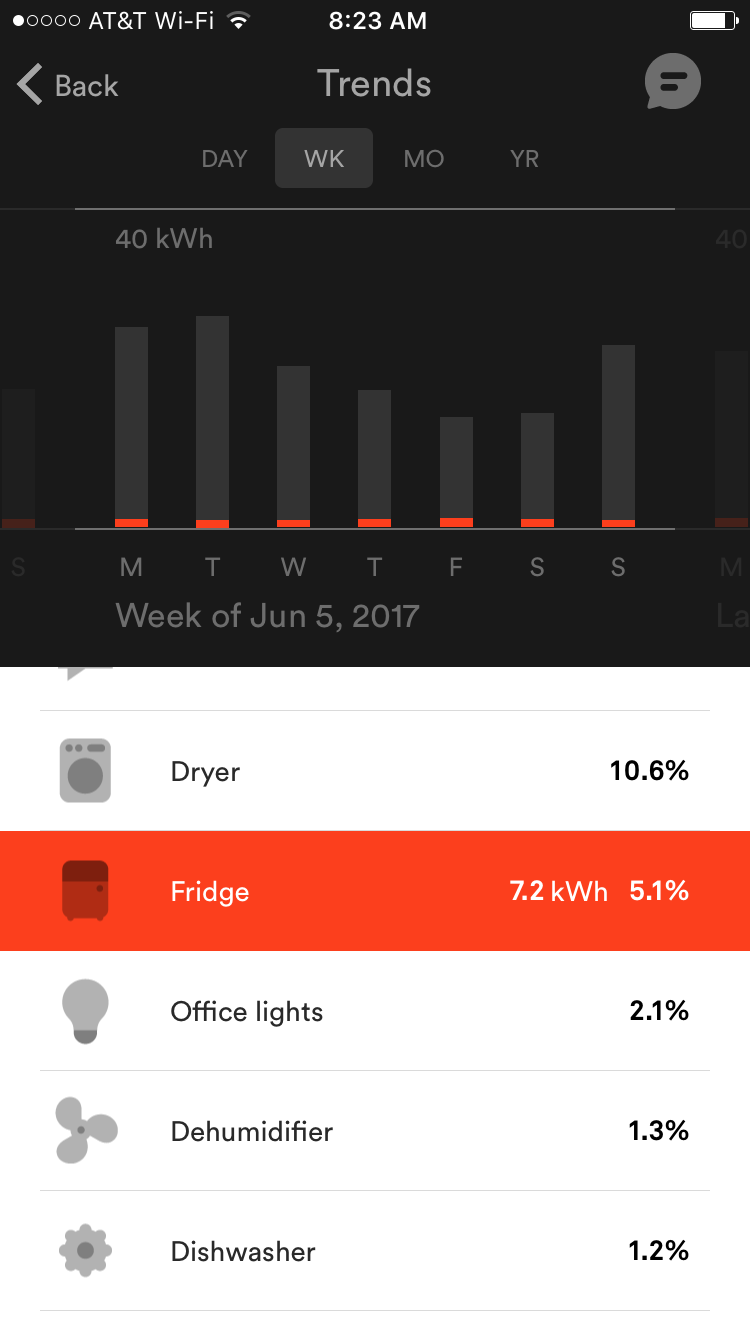
Highlights from Week 2
We’ve been discovering and labeling new devices every few days now. The lights in the office were easy to label since I work from there regularly – knowing your usage patterns greatly simplifies identification. Something interesting: the office light fixtures use 3-way (incandescent!) bulbs, both set to the third click – 150 watts each. When you flip the switch, you instantly see a jump of about 300 watts on the app’s Now screen.
Compared to everything else that’s going on in our home, that seems like way too much energy for lighting. I haven’t replaced these bulbs in years, but now that I see how much they suck, I’m switching to comparable LEDs.
One device took a bit of teamwork to identify – Motor 2. Looking at historical data, it went on Saturday around 8 a.m. for 4 minutes, off for a few, then on again for 10 minutes. Stumped, I asked one of my kids who reminded me we were baking that morning. Understanding the behavioral context, we knew that Motor 2 was the stand mixer – mystery solved.
Week 3
Sense isn’t just learning about my home’s energy consumption, it’s teaching me to make smarter choices. The fridge uses on average 110 watts when running – but we have no alternative. But with the office lights (now down to 64 watts thanks to 2 LED bulbs), I have an alternative for part of the day – sunlight.
Also, it’s clear why energy rates are higher during the day – that’s when most of us are using most of our electricity. The Trends screen on the Sense Home app shows that our usage peaks from 4-10 p.m. (during our utility provider’s highest rate period). Activities that we can shift to off-peak hours would reduce our electric bill.
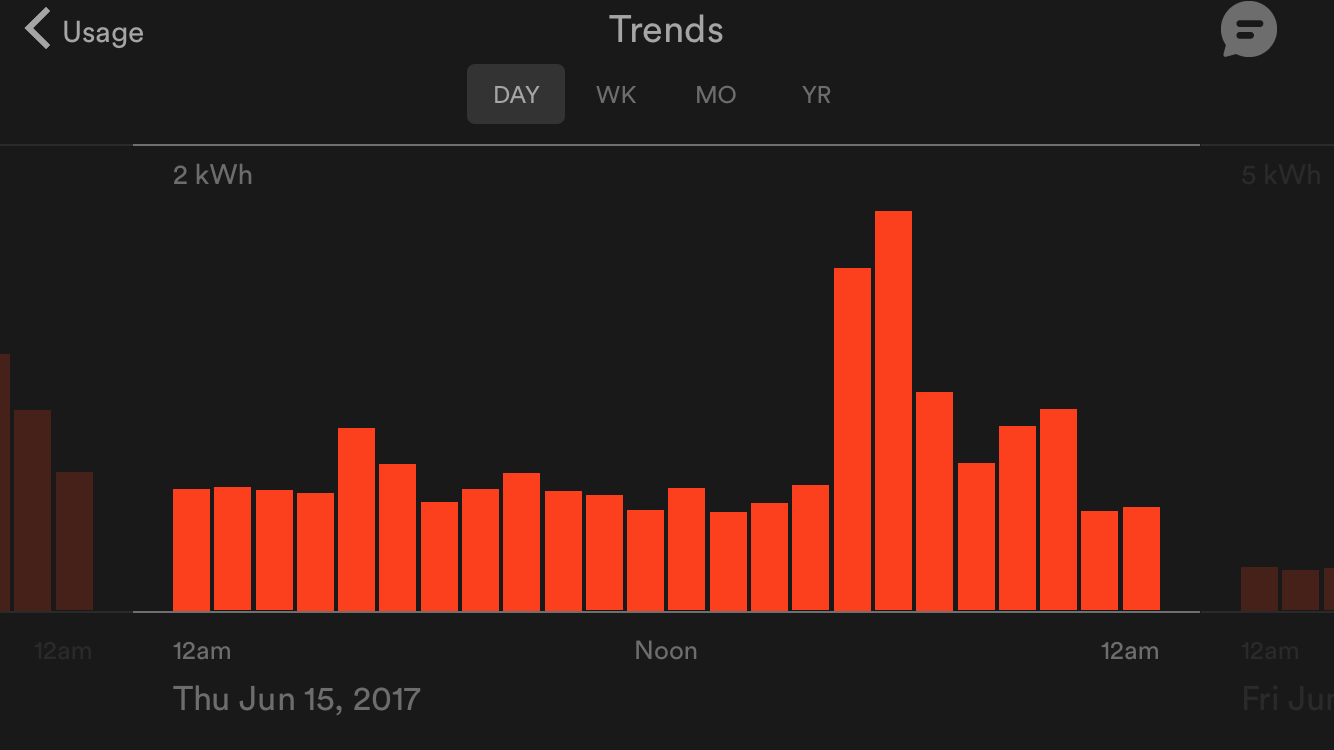
Always-On My Mind
Now that I can monitor my always-on devices and see how they really add up, I’m giving these devices serious thought.
To see which are the biggest vampires, I walk around with my Sense Home app set to Power Meter, feeling like a doctor scanning for a patient’s vitals. As I turn devices on and off, I make a discovery. Our printer, which I thought rested in stand-by mode, was never actually going to sleep. The display was constantly on, and using 17 watts. Not huge, but that’s 150 kW per year, or about $15. Since we use the printer so infrequently, I turned it off. But we’ll leave other devices ready to rock, like our Sonos, since we like them available at a moment’s notice.
If you want to get energy-competitive (guilty!) you can compare your home against others – a recent study suggests that 25% of residential use comes from always-on devices. At 11%, we’re killing it. I’m not sure why my wife isn’t as thrilled as I am about this.
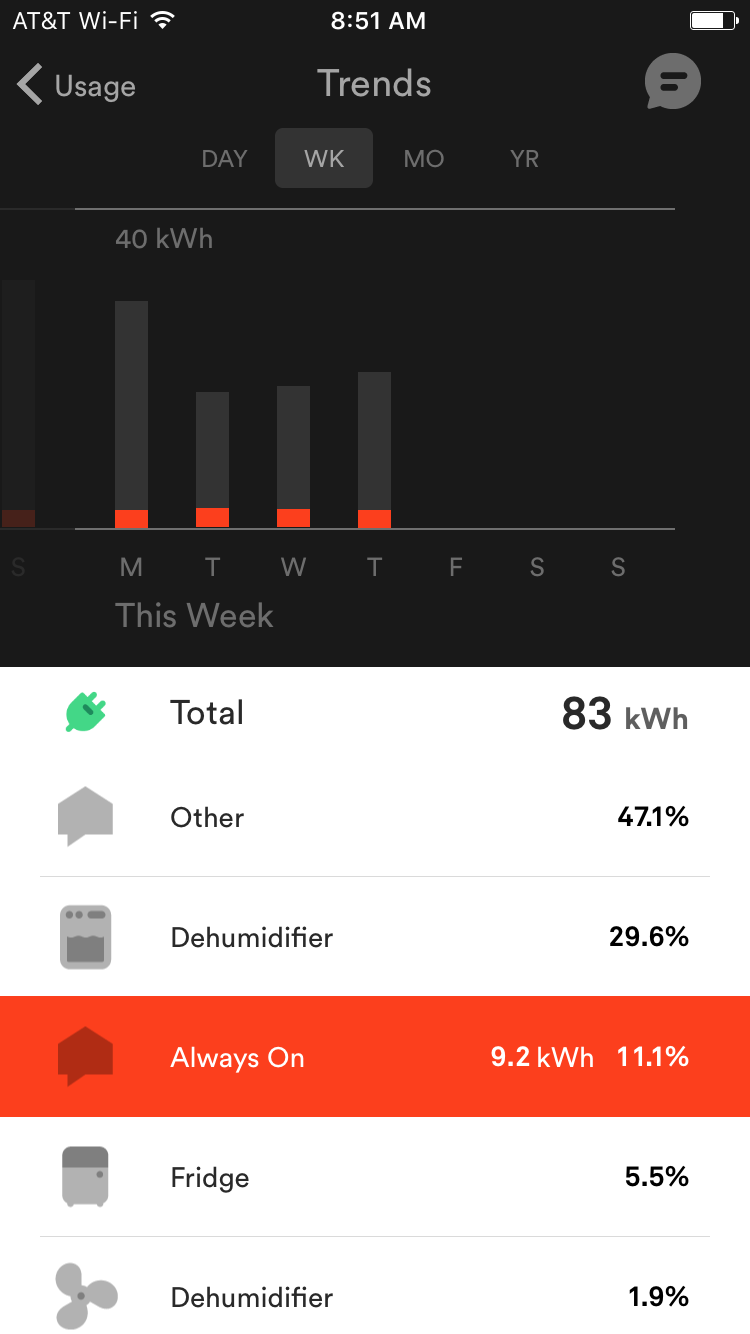
One Month and Counting
We’ve discovered 20 or so devices – the major stuff like washer, dryer, coffeemaker, dehumidifier, lights and dishwasher. I know there are other things yet to be found, but some devices, like our blender and cordless tool charger, are used so infrequently, they’ll take more time.
The real value for me is understanding our usage. I think of Sense’s data like the calorie information on food packaging. Now I know where we are using electricity, and can appreciate the cost of running that device and if we should replace it.
For instance, the dishwasher was here when we moved in 4 years ago, and I’ve wondered if we should upgrade to a more energy efficient model. With Sense, I can see that our machine’s actual usage is about .85 kWh per load, which is very respectable compared to published averages. I don’t know how much we save by not using the water heater or drying functions, but I have the ability to collect the data if I ever want to find out.
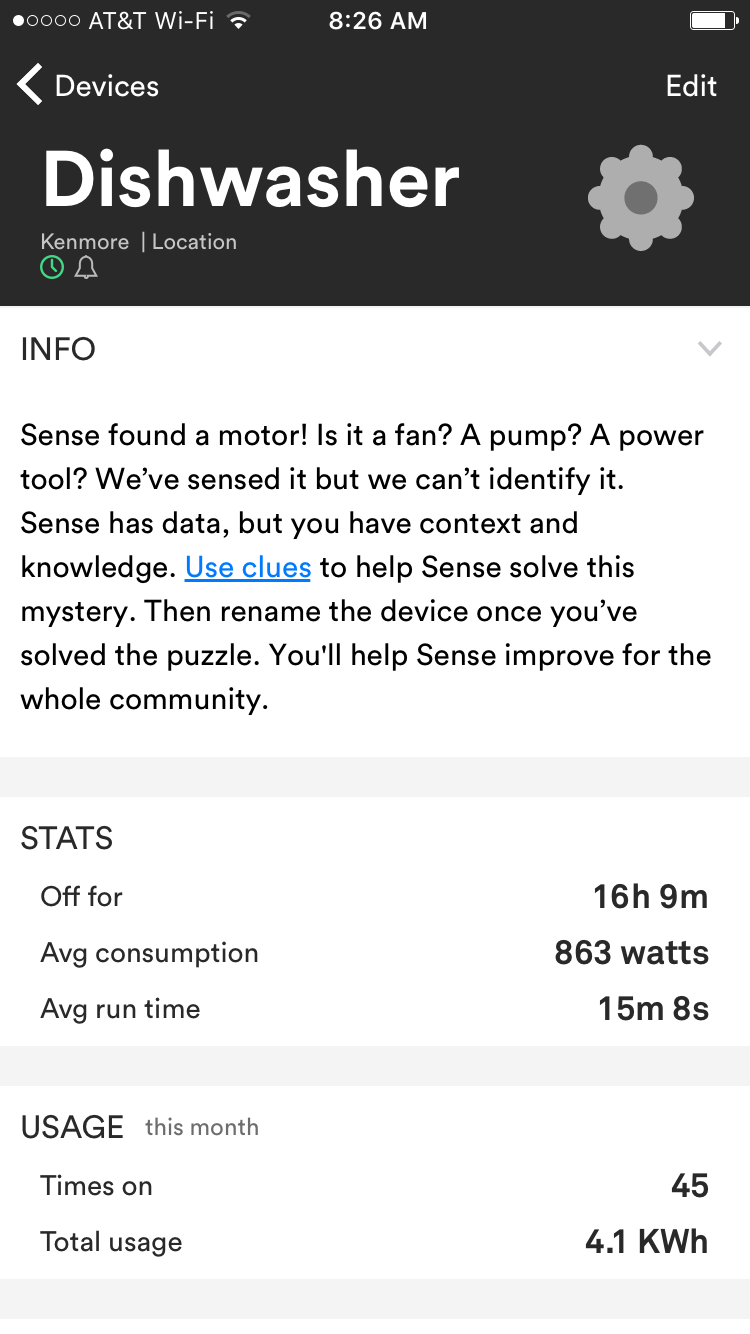
All in all, the first month has been an eye-opener. I know far more about what’s going on in my home now, and have the tools to make smarter choices. One of the biggest pluses with Sense is that when we add solar down the road, we’ll have data to make informed system decisions.
Stace Caseria is a freelance writer who makes his living, in part, writing about technology, which is ironic given how worried he is about the robots taking over. He was once an intern at MAD Magazine, and has mechanical sympathy for old Italian cars.
